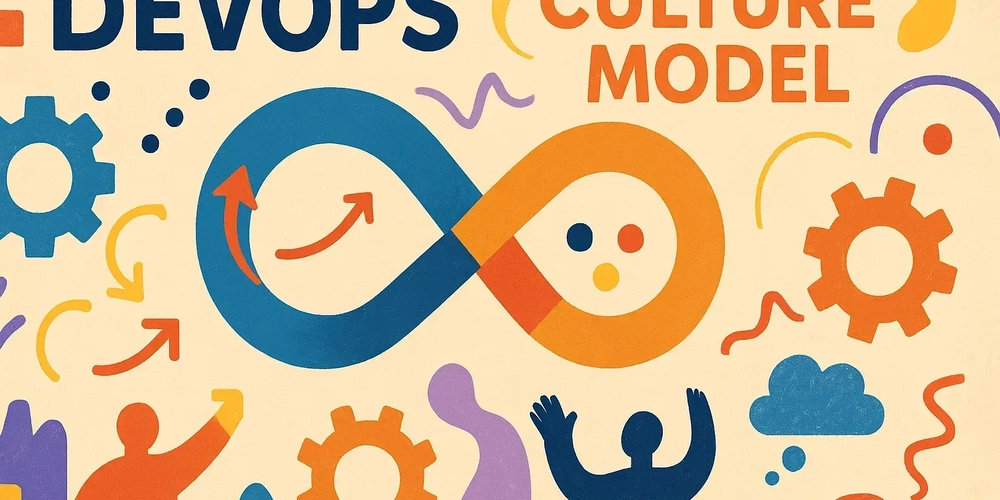Decoding Your DevOps Team: A Peek with Schein's Culture Model
Ever wondered what really makes your DevOps team tick, or sometimes, stumble? Beyond the CI/CD pipelines and daily stand-ups, there's a deeper cultural current at play. Edgar Schein's Culture Model offers a fantastic lens to get an overview of this complex environment by breaking culture down into three interconnected layers. The most visible layer is that of Artifacts. These are the tangible, observable elements of your team's culture – the tip of the iceberg, so to speak. In a DevOps context, this includes the tools they use, like CI/CD systems such as Jenkins or GitLab CI, monitoring dashboards like Grafana, and communication platforms like Slack. It also encompasses their established processes and rituals, such as daily stand-ups, sprint planning meetings, retrospectives, blameless post-mortems, and rigorous pull request reviews. Even the physical or virtual workspace, shared documentation on wikis, and the specific language, acronyms, or inside jokes used by the team are artifacts. Observing these provides initial clues: a plethora of automated tests might suggest a value for quality, while frequent, open post-mortems can hint at a learning-oriented culture. Moving deeper, we encounter Espoused Values. This layer represents the stated goals, strategies, and philosophies that the team publicly endorses. It's what the team says it values and how they justify their actions. For a DevOps team, you might hear phrases like, "We believe in 'you build it, you run it'," "Collaboration between Dev and Ops is paramount," "Automation first," or "We foster a blameless culture." These declarations reveal the team's aspirations and official stance. However, it's crucial to note that there can sometimes be a gap between these espoused values and the actual, underlying behaviors. This brings us to the most profound and often hidden layer: Basic Underlying Assumptions. These are the unconscious, taken-for-granted beliefs and perceptions that truly drive behavior. They are deeply ingrained, often unspoken, and form the powerful, hidden base of the cultural iceberg. Healthy DevOps assumptions might include beliefs like "change is constant and manageable through automation and collaboration," "failure is an inevitable part of innovation and a key learning opportunity," or "trust between team members and departments is fundamental." Conversely, unhealthy underlying assumptions could be "it's safer to stick to what we know, even if it's slow," or "someone will inevitably get blamed if this deployment fails," or even a lingering "Dev throws it over the wall" mentality. This core level is where the true culture resides. If, for instance, "blameless post-mortems" (an artifact) and the espoused value of "learning from failure" are consistently undermined by an underlying fear that "mistakes lead to punishment," then the culture isn't genuinely blameless, despite what's seen or said. To use Schein's model for a DevOps overview, one would start by observing the artifacts and listening carefully to the espoused values articulated by team members and leadership. The real insight often comes from then gently probing for the basic underlying assumptions, especially by looking for inconsistencies between what's visible, what's said, and what actually happens. For example, if a team espouses speed but has an incredibly long, manual approval process, what underlying assumption is driving that artifact, perhaps a deep-seated distrust or an extreme aversion to any perceived risk? By examining these three levels in concert, you can gain a much richer, more nuanced understanding of your DevOps team's culture. This allows you to identify areas of strength, pinpoint misalignments between stated values and actual practice, and begin constructive conversations about fostering an even more effective, collaborative, and positive environment.

Ever wondered what really makes your DevOps team tick, or sometimes, stumble? Beyond the CI/CD pipelines and daily stand-ups, there's a deeper cultural current at play. Edgar Schein's Culture Model offers a fantastic lens to get an overview of this complex environment by breaking culture down into three interconnected layers.
The most visible layer is that of Artifacts. These are the tangible, observable elements of your team's culture – the tip of the iceberg, so to speak. In a DevOps context, this includes the tools they use, like CI/CD systems such as Jenkins or GitLab CI, monitoring dashboards like Grafana, and communication platforms like Slack. It also encompasses their established processes and rituals, such as daily stand-ups, sprint planning meetings, retrospectives, blameless post-mortems, and rigorous pull request reviews. Even the physical or virtual workspace, shared documentation on wikis, and the specific language, acronyms, or inside jokes used by the team are artifacts. Observing these provides initial clues: a plethora of automated tests might suggest a value for quality, while frequent, open post-mortems can hint at a learning-oriented culture.
Moving deeper, we encounter Espoused Values. This layer represents the stated goals, strategies, and philosophies that the team publicly endorses. It's what the team says it values and how they justify their actions. For a DevOps team, you might hear phrases like, "We believe in 'you build it, you run it'," "Collaboration between Dev and Ops is paramount," "Automation first," or "We foster a blameless culture." These declarations reveal the team's aspirations and official stance. However, it's crucial to note that there can sometimes be a gap between these espoused values and the actual, underlying behaviors.
This brings us to the most profound and often hidden layer: Basic Underlying Assumptions. These are the unconscious, taken-for-granted beliefs and perceptions that truly drive behavior. They are deeply ingrained, often unspoken, and form the powerful, hidden base of the cultural iceberg. Healthy DevOps assumptions might include beliefs like "change is constant and manageable through automation and collaboration," "failure is an inevitable part of innovation and a key learning opportunity," or "trust between team members and departments is fundamental." Conversely, unhealthy underlying assumptions could be "it's safer to stick to what we know, even if it's slow," or "someone will inevitably get blamed if this deployment fails," or even a lingering "Dev throws it over the wall" mentality.
This core level is where the true culture resides. If, for instance, "blameless post-mortems" (an artifact) and the espoused value of "learning from failure" are consistently undermined by an underlying fear that "mistakes lead to punishment," then the culture isn't genuinely blameless, despite what's seen or said.
To use Schein's model for a DevOps overview, one would start by observing the artifacts and listening carefully to the espoused values articulated by team members and leadership. The real insight often comes from then gently probing for the basic underlying assumptions, especially by looking for inconsistencies between what's visible, what's said, and what actually happens. For example, if a team espouses speed but has an incredibly long, manual approval process, what underlying assumption is driving that artifact, perhaps a deep-seated distrust or an extreme aversion to any perceived risk?
By examining these three levels in concert, you can gain a much richer, more nuanced understanding of your DevOps team's culture. This allows you to identify areas of strength, pinpoint misalignments between stated values and actual practice, and begin constructive conversations about fostering an even more effective, collaborative, and positive environment.








































































































































































![[The AI Show Episode 146]: Rise of “AI-First” Companies, AI Job Disruption, GPT-4o Update Gets Rolled Back, How Big Consulting Firms Use AI, and Meta AI App](https://www.marketingaiinstitute.com/hubfs/ep%20146%20cover.png)






















































































































































































































































































































































































![Beats Studio Pro Wireless Headphones Now Just $169.95 - Save 51%! [Deal]](https://www.iclarified.com/images/news/97258/97258/97258-640.jpg)







































































































